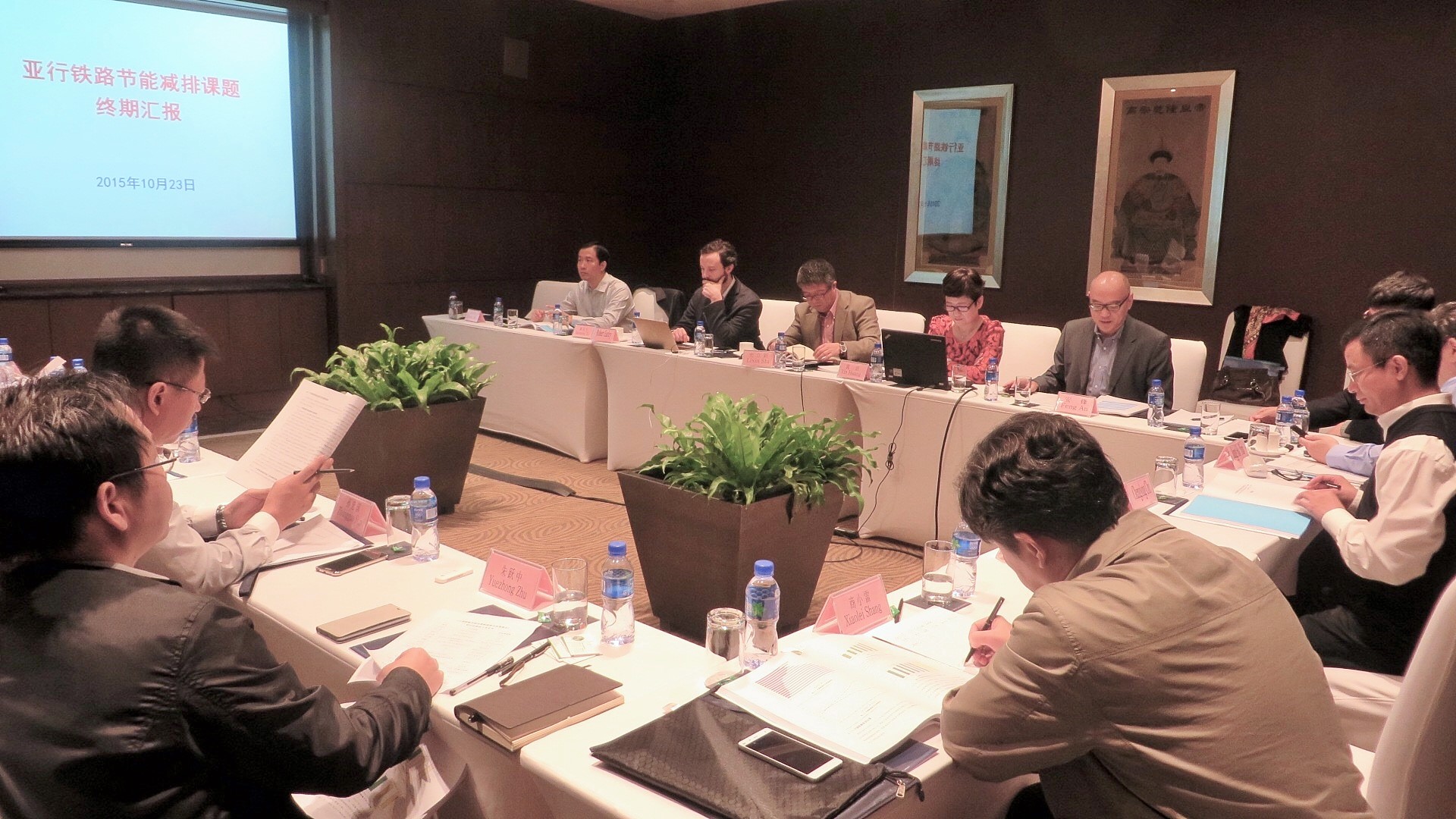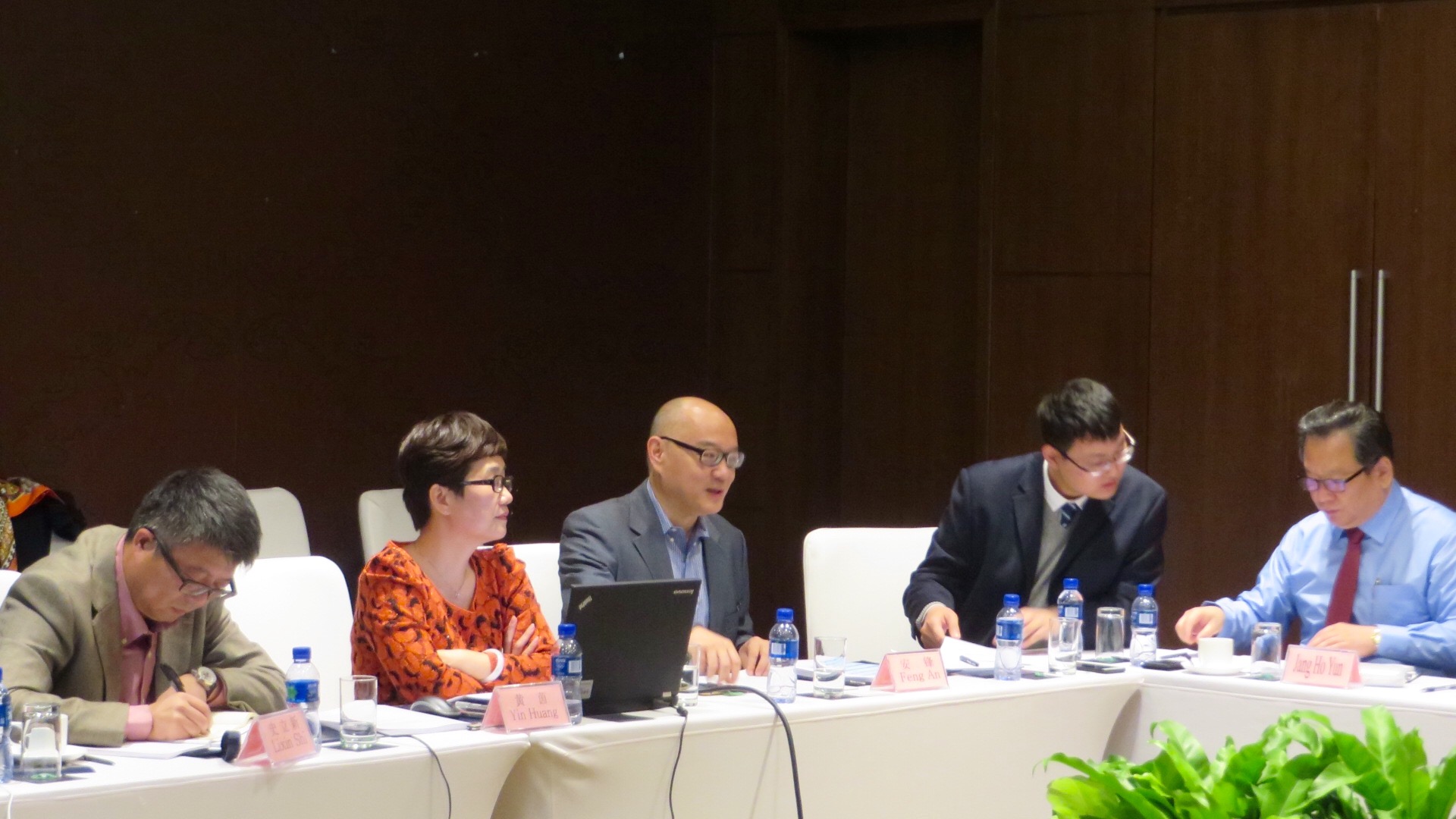After more than a year of research work, Dr. Feng An, President of iCES, as well as the leader of Asian Development Bank Railway Energy Conservation Research Team, successfully held the final report meeting in Beijing on Oct.25th 2015. The research team consists of members from iCES and China Academy of Railway Sciences and the National Institute of Economic System and Management Development and Reform Commission. The project aims to promote policy recommendations for the Chinese government and relevant enterprises to provide energy saving railroad and railway, and to raise awareness of the Asia-Pacific region government’s energy efficiency policies and measures as well as to provide relevant methods and tools.
The project started in May 2014, after a series of research studies and expert discussions, the final report was completed in September 2015. The result shows that in recent years, China Railway energy saving and emission reduction achieved good results. From 2005 to 2014, the turnover railway unit energy consumption fell by 4.0% annually, and millions of ton-kilometers energy consumption decreased from 4.54 tons to 3.16 tons. Thus, improving the electrification rate, developing heavy-haul technology and the strengthening of energy management overloading are the three main factors of China’s railway energy conservation. In the future, China railway will show a slight growth of total energy consumption, improvement in energy efficiency, and the method of the use the energy will change from ” oil and electricity” to ” power-based “. And as the promotion for new energy and the use of renewable energy sources expands, coal consumption will continue to decrease. However, compared to some foreign advanced technology and experiences, there is still weakness in China Railway policy in terms of energy saving, energy-saving mechanism, the application of new technology. Therefore, it is important to catch the keynote of energy consumption, to further enhance energy efficiency.
For Railway itself, the focus is to continue to increase the ratio of electric traction, and to rise effective transport coefficients by optimizing transport organizations; Moreover, to accelerate the use of new and renewable energy in the field of non- traction area, to accelerate the replacement of coal-fired and oil-fired boilers, and to reduce fossil energy consumption. At the mean time, to actively promote locomotives, construction, buses and other major energy-using equipment and energy saving technology. The main solutions include: improving the energy efficiency of railway policy system, strengthening the basic work of the railway energy management, speeding up the elimination of backward production capacity, focusing on implementation of a number of major energy-saving technology projects, and vigorously promoting energy-saving mechanism innovation railways.













